

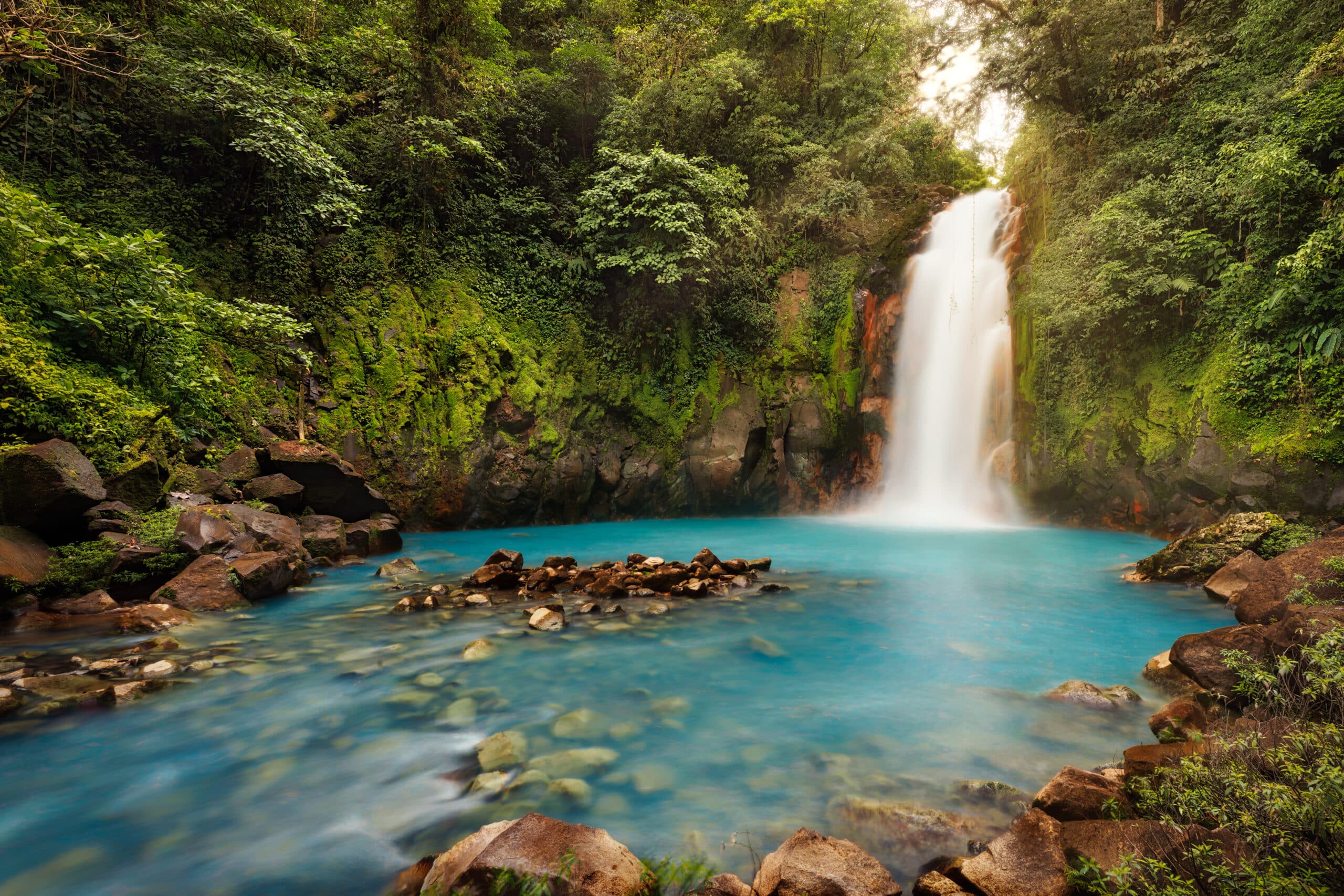
Costa Rica, jewel of Central America and pioneer of ecotourism, opens the doors to a natural sanctuary of exceptional richness. Between lush tropical forests sheltering an amazing biodiversity, majestic volcanoes, wild beaches bordered by two oceans, and a deep commitment to “Pura Vida”, our stays in Costa Rica are an invitation to adventure, discovery, and reconnection with nature. Explore our offers and be enchanted by the green magic of Costa Rica.
A breathtaking biodiversity
Costa Rica is home to nearly 6% of the world’s biodiversity on a tiny territory, with an incredibly varied flora and fauna (sloths, monkeys, toucans, colorful frogs, etc.).
A strong commitment to ecotourism and conservation
More than a quarter of the territory is protected by national parks and reserves, offering authentic and responsible nature experiences.
Adventures for every taste
Zip lining over the canopy, white-water rafting, hiking to volcanoes, surfing renowned waves, turtle watching.
Pura Vida
More than an expression, a true way of life reflecting the optimism, kindness, and relaxation of Costa Ricans (Ticos).
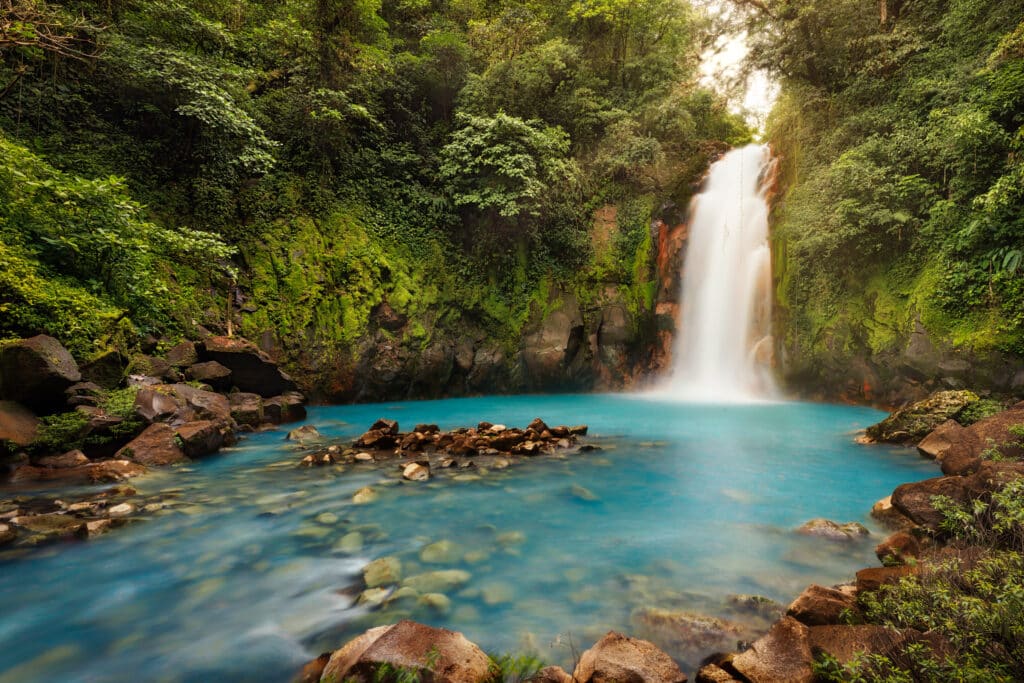
€3,795
price per person
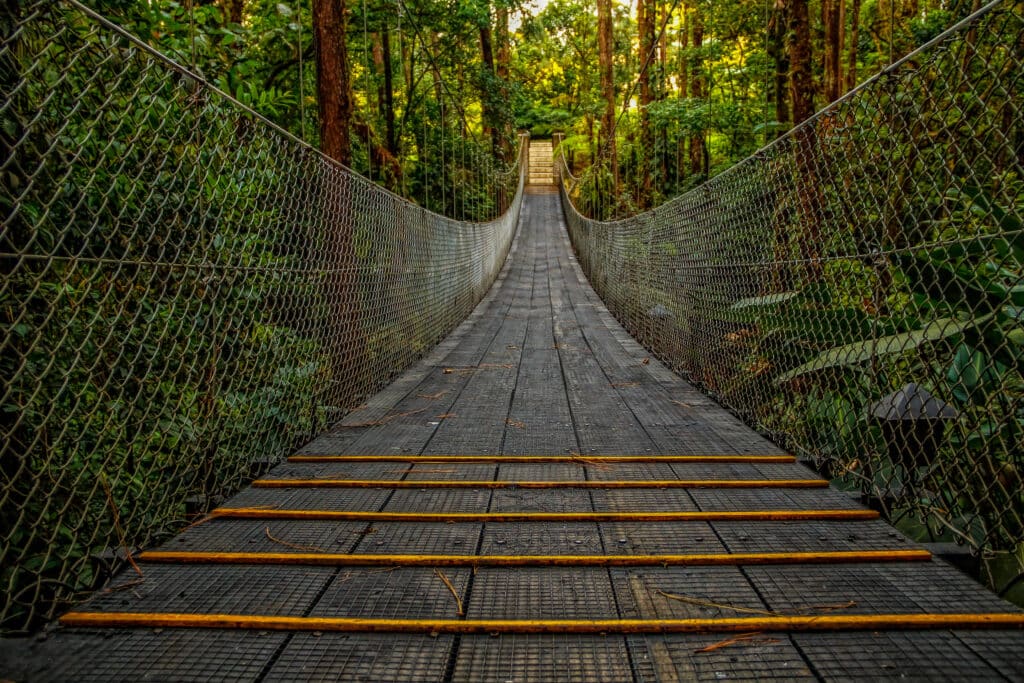
€3,855
price per person
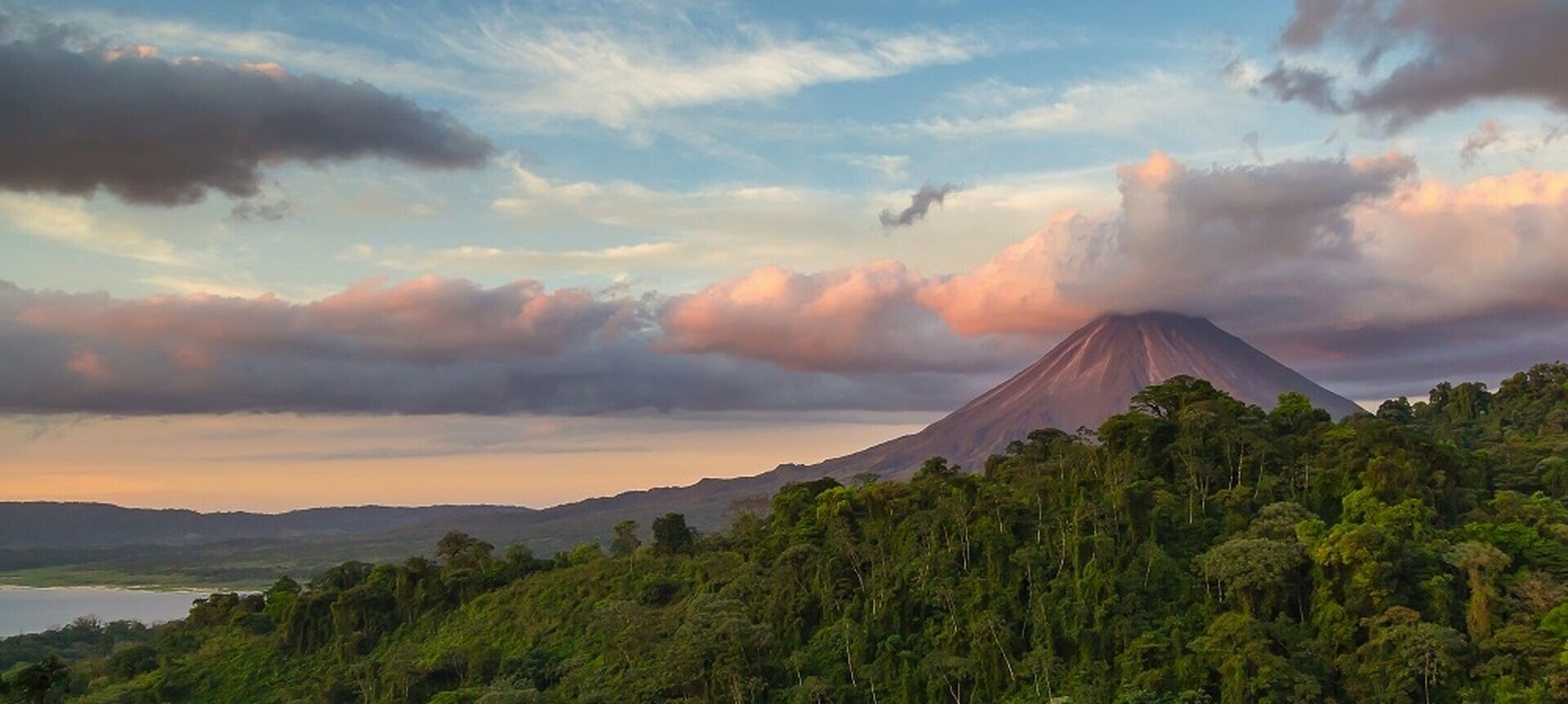
6395€
price per person
Costa Rica is a paradise for nature lovers.
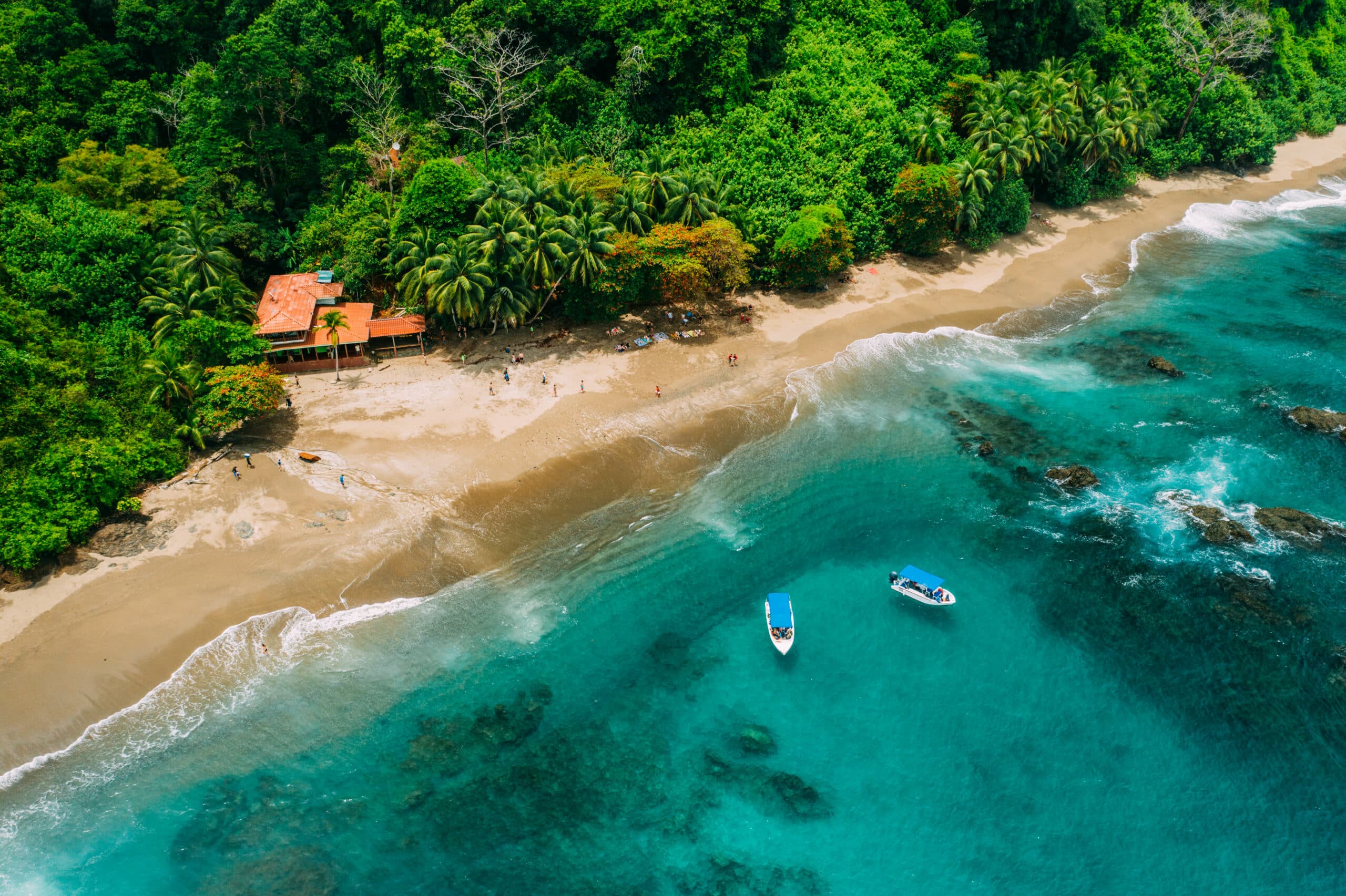
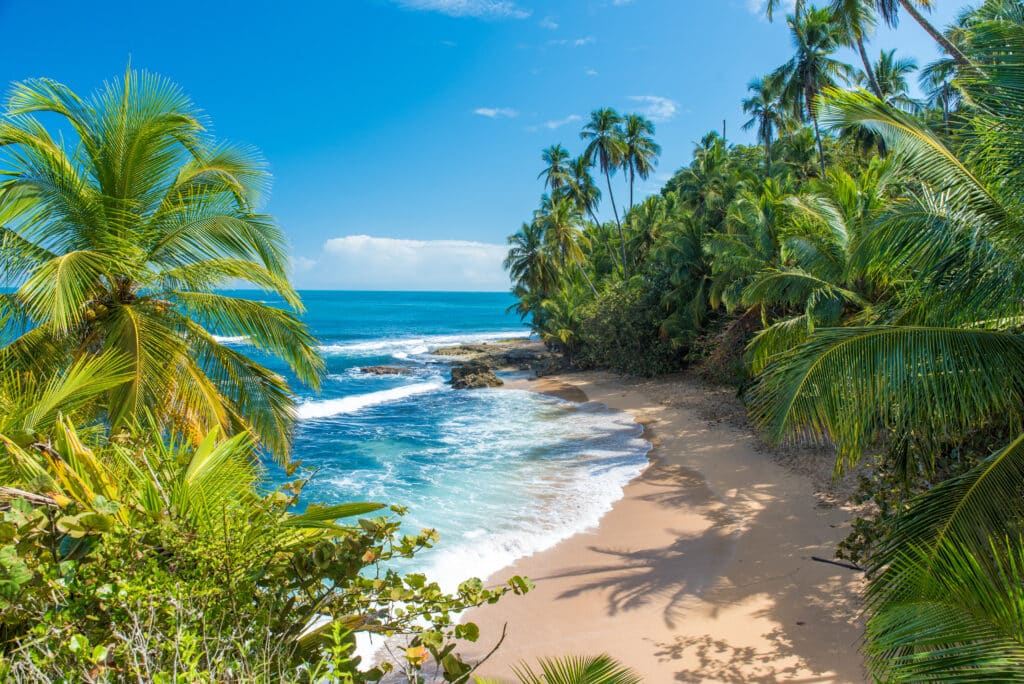
Costa Rica has a tropical climate with two main seasons:
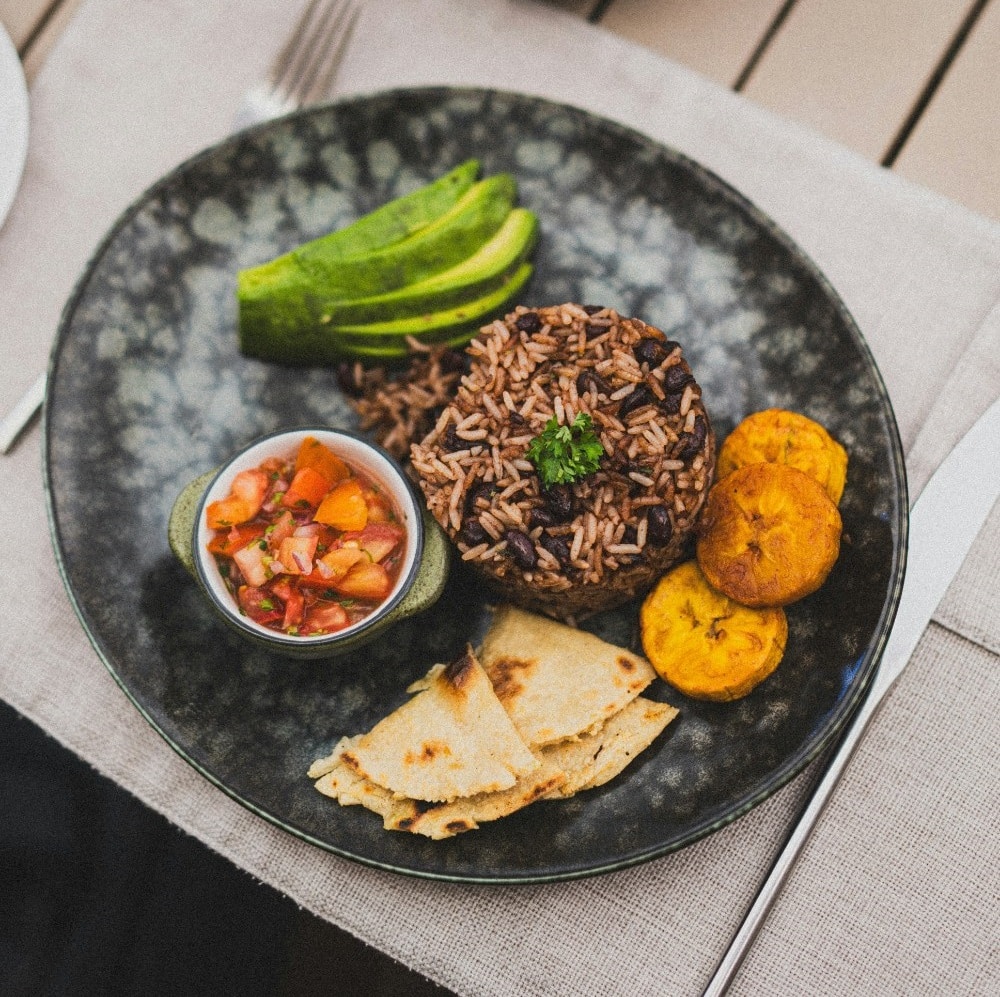
Costa Rican cuisine (“tica”) is simple, fresh, and flavorful. The national dish is gallo pinto, a mix of rice and black or red beans, often served for breakfast with eggs. The casado is a typical lunch dish, consisting of rice, beans, salad, fried plantains, and a portion of meat (chicken, beef, pork) or fish. The ceviches with fresh fish are excellent. Tropical fruits are plentiful and delicious (pineapple, mango, papaya, passion fruit, guava). The batidos (fresh fruit smoothies with water or milk) are very popular. Costa Rican coffee is world-renowned.
| Jan | Feb | March | April | Mai | June | July | Aug | Sept | Oct | Nov | Dec | |
|---|---|---|---|---|---|---|---|---|---|---|---|---|
| Our opinion | ||||||||||||
| Season | ||||||||||||
| Tourist peak | ||||||||||||
| T° max | 28°C | 29°C | 30°C | 30°C | 29°C | 28°C | 28°C | 28°C | 28°C | 28°C | 28°C | 28°C |
| Rainy days | 5 d | 4 d | 4 d | 8 d | 21 d | 21 d | 22 d | 23 d | 24 d | 22 d | 18 d | 9 d |
| Hiking |
Costa Rica has no army! It was abolished in 1948, and the funds that were allocated to it were reinvested in education, health, and environmental protection.
The official currency is the Costa Rican Colón (CRC). The US dollar (USD) is widely accepted, especially in tourist areas. Many prices are even displayed in USD. It is advisable to have colones for small businesses, local markets, and public transport. Credit cards are accepted in most hotels, restaurants, and tourist shops. Automated tellers (ATMs) are common and often dispense colones and dollars.
The inhabitants of Costa Rica are called Costaricans. They affectionately call themselves Ticos and Ticas.
The official language is Spanish. Costa Rican Spanish has some particularities and local expressions (like “Pura Vida!”). In tourist areas, English is widely spoken, especially in hotels and by activity providers.
In Costa Rica, the electrical plugs are of type A and B. The standard voltage is 120V and the frequency is 60Hz. You will need an adapter for European devices (type C/E/F) and possibly a voltage converter for devices not compatible with 120V.